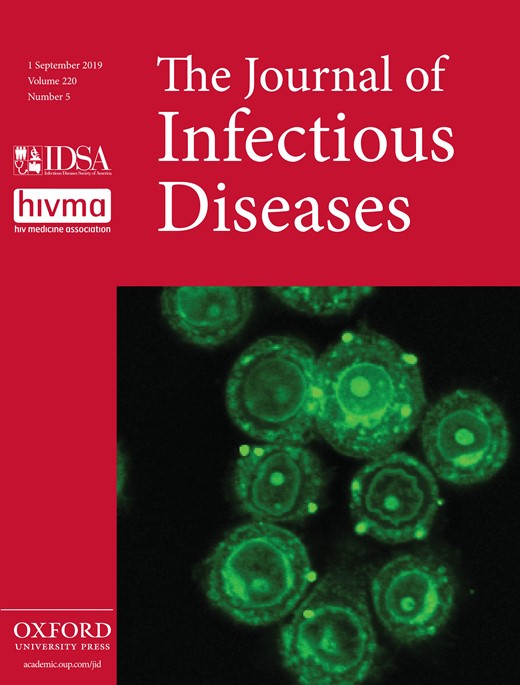-
PDF
- Split View
-
Views
-
Cite
Cite
Melissa B Gilkey, Marjorie A Margolis, Human Papillomavirus Vaccination Coverage Gaps in Young Adolescents, The Journal of Infectious Diseases, Volume 220, Issue 5, 1 September 2019, Pages 727–729, https://doi.org/10.1093/infdis/jiy683
Close - Share Icon Share
(See the Brief Report by Bednarczyk et al, on pages 730–4.)
Human papillomavirus (HPV) vaccination has been the focus of remarkable investment and collaboration in the United States, with many beneficial implications for adolescent health and cancer prevention. Most notably, accumulating evidence of the vaccine’s safety and effectiveness makes it possible to imagine a future in which we are able to prevent most of the >40000 HPV-associated cancers currently diagnosed in the United States each year [1–3]. At the same time, government agencies, including the Centers for Disease Control and Prevention and the National Cancer Institute, have provided the leadership and funding to mobilize a diverse group of stakeholders around the goal of understanding and addressing barriers to HPV vaccination [4]. This work has yielded evidence-based strategies to improve the delivery of HPV vaccine, as well as a concerted effort by primary care providers, public health departments, nonprofit health advocacy organizations, and others to implement those strategies. As a result, HPV vaccination coverage is once again improving after several years of stagnation, with the percentage of 13–17-year-old adolescents who received at least 1 dose increasing from 56% in 2015 to 66% in 2017 [5, 6].
Despite recent progress, the report by Bednarczyk et al in this issue of The Journal of Infectious Diseases demonstrates that a great deal of work remains if we are to achieve the goal of guideline-consistent HPV vaccine delivery [7]. Since October 2016, national recommendations have been for the routine administration of 2 doses of HPV vaccine to male and female adolescents at ages 11–12 years [8]. Bednarczyk et al, however, found that only 16% of 13–17-year-old adolescents assessed via the 2016 National Immunization Survey (NIS)–Teen were fully vaccinated prior to age 13 years [7]. Furthermore, state-specific estimates reported in their article suggest geographic disparities in on-time HPV vaccination, with coverage ranging from 26% in Rhode Island to just 8% in Arkansas [7]. Today’s 11–12-year-old children likely receive on-time HPV vaccination somewhat more often than the older adolescents assessed by the 2016 NIS-Teen, but based on overall coverage, we can assume that on-time coverage is still very low.
Although the Food and Drug Administration recently approved expanded use of HPV vaccination for individuals aged 9–45 years [9], vaccination prior to age 13 years remains an important goal. As Bednarczyk et al note, on-time vaccination is more likely to protect adolescents prior to HPV exposure [7]. Vaccination in early adolescence is also associated with a stronger immune response, which may translate into enhanced effectiveness [10]. For these reasons, increasing the timeliness of HPV vaccination must be considered alongside efforts to increase the overall proportion of adolescents vaccinated, raising several challenges for the field.
First, the analysis by Bednarczyk et al speaks to the need for highly scalable interventions to support guideline-consistent delivery of HPV vaccine. Given the sheer magnitude of the problem, interventions that engage healthcare providers and systems offer our best chance of improving the timeliness of HPV vaccination nationally, and recent research has identified a small number of evidence-based interventions for doing so. These interventions including training sessions and prompts to improve provider communication and prescribing practices, centralized reminders/recalls to bring adolescents into care, and learning collaboratives and other approaches to engaging providers in HPV vaccine–related quality improvement [11–17]. At present, strategies are needed for scaling up these interventions. Reaching busy providers constitutes a particularly difficult challenge. Partnerships between health systems and quality improvement programs, such as those fostered by the American Cancer Society’s Vaccinate Adolescents against Cancers program, will be critical [18].
Second, the geographic disparities in HPV vaccination coverage suggested by analyses of NIS-Teen data, including the present study, warrant further research [6]. To date, we know very little about why these disparities persist, even in the absence of disparities by race/ethnicity or income that so often characterize the delivery of other health services [6]. Differences in provider prescribing practices, parents’ vaccination confidence, states’ support of immunization programs, or other factors may play a role. Multilevel analytic approaches are needed to help us understand and address the striking geographic variation in HPV vaccination.
Finally, Bednarczyk et al demonstrate the need for better data. The NIS is the gold standard for establishing national vaccination coverage estimates, but as a resource-intensive survey with a declining response rate, it offers limited power to characterize vaccination at the level of states and regions. In the era of big data, researchers must continue to develop and link new data sets assembled from administrative claims, immunization information systems, and other existing sources to support more nuanced analysis of, for example, geographic disparities in HPV vaccination. At the same time, such data sets hold promise for supporting practice improvements through the assessment of HPV vaccine–related quality metrics that emphasize timeliness, such as the National Committee for Quality Assurance’s Healthcare Effectiveness Data and Information Set measure [19].
Improving HPV vaccination is a national public health priority, and recent gains in coverage suggest that the efforts of primary care providers, public health practitioners, researchers, and health advocates are having an impact. Fully realizing the potential of HPV vaccination will require a multifaceted effort involving scalable health systems interventions, a greater understanding of geographic disparities in HPV vaccination coverage, and improved data on HPV vaccination. As Bednarczyk et al demonstrate, the rate of on-time vaccination is critically low, and our work is far from complete.
Notes
Potential conflicts of interest. Both authors: No reported conflicts of interest. Both authors have submitted the ICMJE Form for Disclosure of Potential Conflicts of Interest. Conflicts that the editors consider relevant to the content of the manuscript have been disclosed.




